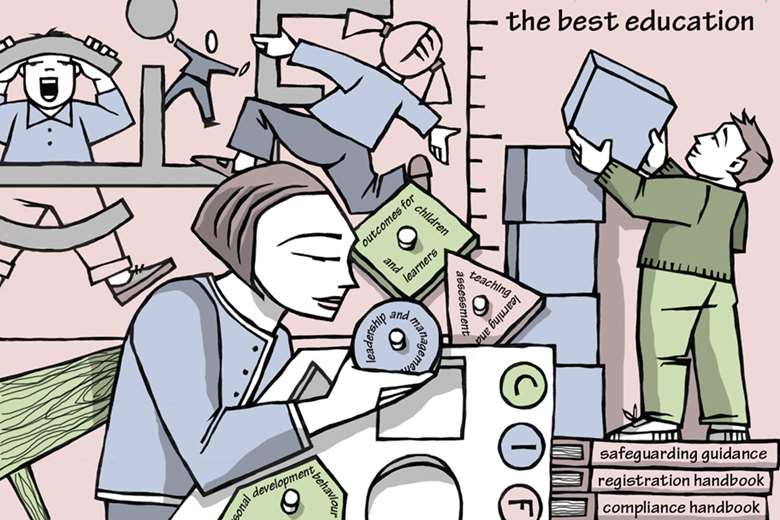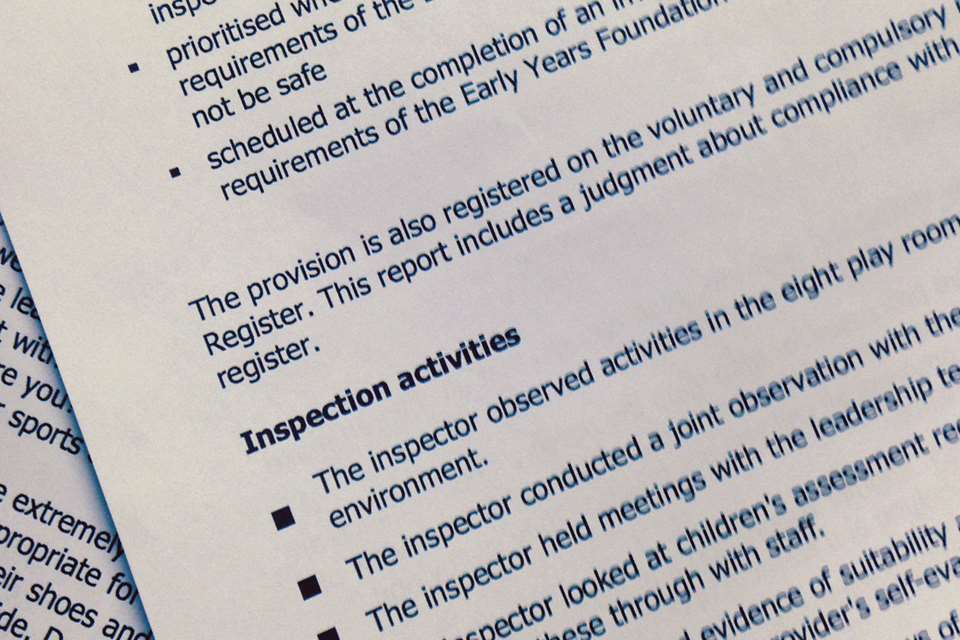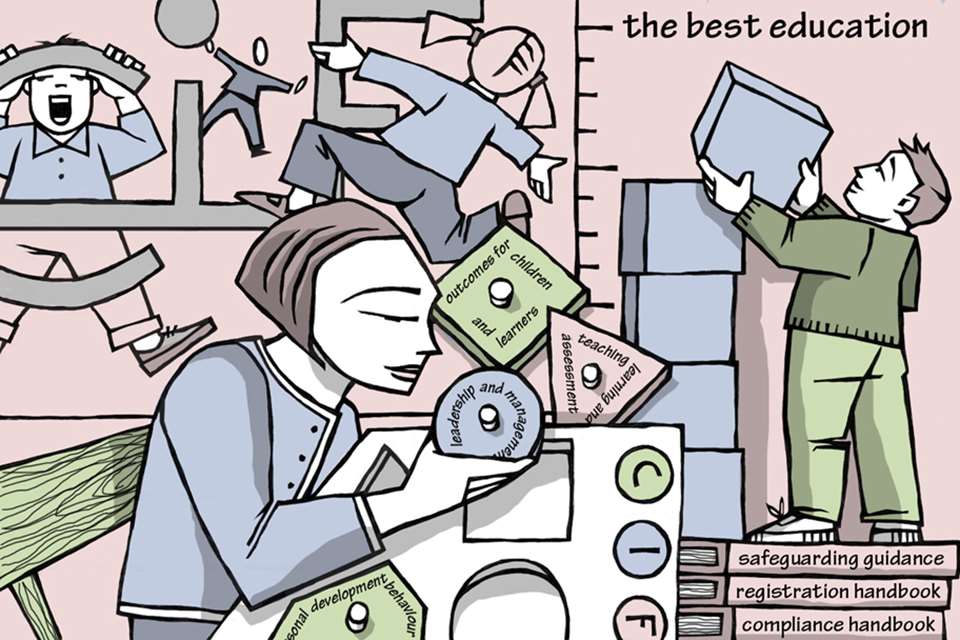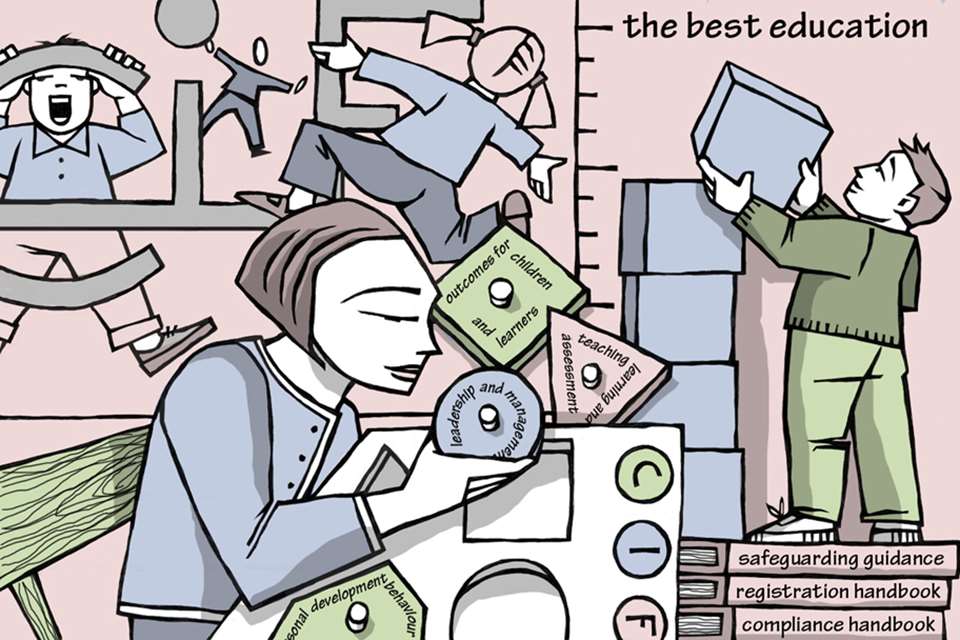Common Inspection Framework: Part 3 - Delving into the detail
Michael Freeston
Monday, September 21, 2015
In the third part of our series on the Common Inspection Framework, The Pre-School Learning Alliance's Michael Freeston provides an indepth comparison of past and current criteria.

Since the last article in this series was published, Ofsted's new Common Inspection Framework (CIF) has come into force. Settings are now being inspected on new evaluation schedules (which set out the key judgements made by inspectors) and have to reconsider what evidence they will collect to demonstrate they are meeting the new requirements.
To prepare for an inspection, managers and practitioners must ensure they are making reference to the correct inspection handbook (Early Years Inspection Handbook for private, voluntary and independent (PVI) group provision and childminders; School Inspection Handbook for nursery schools and nursery classes in schools). The CIF continues Ofsted's helpful practice of providing very detailed information about the criteria against which each aspect of provision will be assessed, the sources of evidence inspectors will look for and the grade descriptors that will be used to evaluate that evidence. Not only does Ofsted outline the questions it will ask of providers but it also provides details of what answers to give and how those answers can be backed up by evidence.
New emphasis
Inspectors will take account of four graded judgements (see headings in 'Key focus points' box). School-based providers have additional sections to consider in their handbook. Paragraphs 187-193 of the handbook (which was updated in August) outline additional considerations when inspecting the quality and standards of early years provision. The grade descriptors aim to be comparable with those for early years providers. A nursery class's assessment will be reported on as a section in the school's overall inspection report, including a numerical grade for the effectiveness of this provision. However, there will not be the four individual graded judgements provided to PVI providers.
Potentially the most controversial element is 'the quality and impact of phonics teaching' (under para 190). It is interesting to note that in earlier frameworks the reference was to 'the quality of the approach to teaching phonics in Reception' (my emphasis). No such statement is included in the evaluation schedule for PVI providers, which may undermine claims that the inspection framework is common across all provision or that the judgements are comparable between the two handbooks. It also implies Ofsted has a different perception of what activities are going on in schooland PVI-based provision. If the inspectorate believes phonics teaching is good for young children, then it should be considered good for children regardless of where they experience their early years provision.
Particular attention is paid in the school handbook to provision for two-year-olds (paras 191-3), recognising that schools no longer need to register this provision separately with Ofsted. Inspectors will observe this provision to assess whether practitioners are providing for the particular characteristics of two-year-olds and responding to their particular stages of development, including 'the large difference between children who are "just two" and those approaching their third birthday' and are 'aware when children need comforting and respond in an appropriate way that provides comfort'. Inspectors will provide a written judgement on the effectiveness of this provision for inclusion in the school's report, but it will not be graded separately. Practitioners in PVI provision who take twos would also be well-advised to take note of this information to inform preparation for their inspection.
For PVI settings, the number of criteria for the effectiveness of leadership and management has expanded from five to eight, and sources of evidence from 11 to 14. The first criterion is to demonstrate an 'ambitious vision, have high expectations for what children can achieve' and how to 'improve staff practice, teaching and learning through effective systems for supervision (and) rigorous performance management'.
Another of the new criteria is judging how well managers 'actively promote British values'. The grade descriptors give some indication of how this might be achieved, for example, 'the promotion of equality, diversity and British values is at the heart of the settings' work' (outstanding) and that the provision 'actively promote(s) equality, diversity and British values through all policies and practice' (good). However, leaders are well advised to research continually the emerging picture of how British values are to be contextualised to the early years sector.
British values is revisited in the personal development, behaviour and welfare judgement, which will assess how the provision helps the children to be 'well prepared to respect others and contribute to wider society and life in Britain'. Other elements within this judgement generally reflect the previous requirements for the contribution to the children's well-being, although the consideration of 'prompt and regular attendance' is another example where the common wording across all inspections is eye-catching (at para 160 the handbook does recognise that as attendance is not mandatory in the early years, monitoring patterns of attendance is more a safeguarding and welfare concern).
Across the CIF, it is important to note the attention being paid to the use of any additio- nal resources to support children's learning and development. Within leadership and management, the 'sources of evidence' considers 'how effectively leaders use additional funding, including the Early Years Pupil Premium (EYPP), and measure its impact on narrowing gaps in children's outcomes'. Article 4 in this series will give more detail about how settings should provide evidence on this. Generally, effective administration of the EYPP is not enough. Practitioners must be able to demonstrate the impact the intervention has had and how this has narrowed the outcomes gap for these children compared to their peers.
Another major change from previous early years inspection frameworks is the CIF's separation out of teaching, learning and assessment, terms previously scattered throughout the evaluation schedule, into a discrete, graded judgement (it comes after leadership and management). The early years handbook states that for registered providers the main evidence for the inspector's judgement will come from observations of the way in which children demonstrate the key characteristics of learning: playing and exploring, active learning, and creating and thinking critically as outlined in the Early Years Foundation Stage (EYFS).
As such, leaders need to be confident that they and all their staff can articulate their approach. Ask yourself: 'What does teaching and learning mean to us and our children and how can we explain this to others, whether they be inspectors or parents?' Central to this are effective systems for assessment on entry, formative assessments, and summative assessment at two-years-old and, where applicable, through the EYFS Profile. Practitioners are expected to use these assessments and 'a secure knowledge of the key characteristics of learning and children's development' to demonstrate 'evidence of planning for children's next stages of learning'.
This statement that planning should be led by the child's individual needs rather than by the need to achieve standardised goals such as those outlined in Early Years Outcomes expands on statements made by Ofsted chief Sir Michael Wilshaw when he launched the CIF in June. He emphasised that success for children and young people should be measured in individual terms. In effect, Sir Michael is agreeing that the education system needs to recognise and embrace the professionalism of those involved in teaching and learning, rather than dictating all aspects of provision centrally.
This approach is underlined in the grade descriptors in the new judgement of outcomes for children, which focus on the rates of progress made by children in relation to their starting points and how well each is prepared for his/her next stage of learning. In addition, inspectors will focus on the progress of children with additional needs.
The new CIF provides an opportunity to demonstrate the professionalism and effectiveness of early years provision, which needs to be embraced and presented back to inspectors in the form of practice that truly meets the needs of children. This will lead to outstanding inspection grades and, more importantly, provide all children with the best start in life.
KEY FOCUS POINTS OF THE CIF
Leadership and management
- Curriculum
- Ambitious vision
- Promoting fundamental 'British values'
- Safeguarding
Teaching, learning and assessment
- Assessment
- Parents
- The next stage of learning
Personal development, behaviour and welfare
- Self-awareness
Outcomes
- Progress measured from an individual starting point
MORE INFORMATION
Key documents can be found online (www.gov.uk). These include:
- The Common Inspection Framework: education, skills and early years
- The Future of Education Inspection: understanding the changes
- Ofsted Early Years Report 2015
Handbook titles
- Early Years Inspection Handbook
- School Inspection Handbook
- Inspecting Safeguarding in Early Years, Education and Skills Settings
Early years will also have a separate registration handbook and a compliance handbook.









